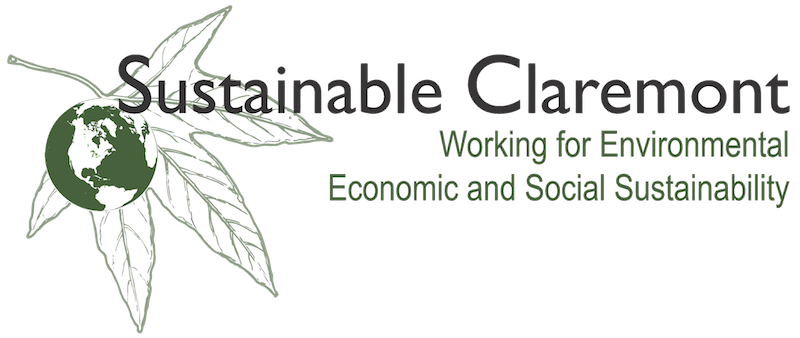In 1954, when I came here to join the chemistry faculty at Pomona College, Claremont was a fine place to live but there was one huge problem: air pollution. Lungs burned, eyes smarted. Our abundant summer sun cooked exhaust from cars and air pollutants from industry into an awful brew of noxious SMOG, trapped by the surrounding mountains. After WW II, as the Southland prospered and population grew, the problem got steadily worse. The South Coast Air Quality Management District was created to control pollutants from stationary sources and the California Air Resources Board to control those from cars and other mobile sources. Industrial sources were required to reduce emissions. Catalytic converters were added to automobiles. SMOG CHECK was created.
It worked. In spite of our ever-growing industries and population (California now has about 1/500 of the world’s population) the air is MUCH cleaner throughout the state. We can be proud of that. But another sort of air pollution, much more insidious and far-reaching, is on the rise. Carbon dioxide from burning carbon-based fuels such as gasoline, oil, coal, wood, and natural gas is building up in the atmosphere, trapping the sun’s heat, and warming the earth.
California can’t solve the climate problem for the world, but we can take pride that our state is a world leader in its plan to decrease greenhouse gas emissions and even more pride that Claremont is in the forefront of cities addressing this issue. Mary Nichols, Chair of the California Air Resources Board, said: "With targets now largely in place, local officials will be weaving a web of policies …that will link land use, housing and transportation together for the first time. For some communities, this state measure simply puts brighter lights, signposts and some handrails along the path they've been pursuing voluntarily for years. Claremont is one of these communities."
In California, the amount of energy consumed in buildings is second only to that used in transportation. We are doing something about that right here, right now, in our fair city. The Claremont Home Energy Retrofit Project (CHERP), led by Devon Hartman and City Sustainability Coordinator Chris Veirs, is a working group of Sustainable Claremont. This project aimed at reducing energy consumption in homes is becoming a recognized model for other communities.
As population grows, water conservation is becoming increasingly critical. Sustainable Claremont’s Water Action Group, chaired by Dick Haskell, is well along in planning for a water reclamation plant that will provide irrigation water for the Claremont Colleges. The Constructed Landscape Action Group led by Weston Westonborg has just introduced a program to certify local home landscapes as sustainable in terms of energy, water, and other resource use. The next Sustainability Dialog will address “The Region’s Water Problems — and How to Solve Them” (December 6, 7:00 pm, 420 N. Harvard Avenue).
All of us should be proud of Claremont’s leadership in increasing energy and water conservation. This is in large part due to the efforts of many individuals working for the common good. We invite you to join other Claremont residents and Sustainable Claremont and add to our Sustainabilty Pride!
Demystifying Sustainability is an initiative of Sustainable Claremont (sustainableclaremont.org).
